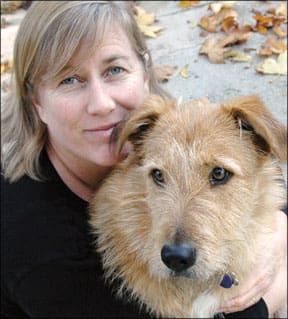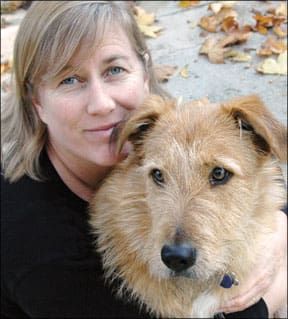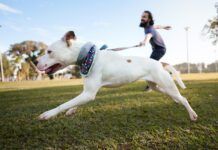By the time this issue arrives in your mailbox, my newest little niece should have made her debut into the outside world. The fact that my brother and sister-in-law are expecting to deliver a baby girl at the end of July will be a surprise to only one party in our immediate and extended family: their dog, Hannah.
I’ve written about Hannah before, and her photo has graced these pages on a number of occasions; she’s a big, pretty, expressive mixed-breed, and my brother is an excellent photographer. Hannah also has some issues with strange people from time to time, and while she’s always been rock-solid with kids, Keith and Leslie have wisely gone out of their way to prepare Hannah as much as they can for the baby’s arrival.

288
To make sure they were on track, I asked our editor of training topics, renowned positive trainer Pat Miller, to prepare an article about what you should do before baby arrives (see page 10). Yes, I was indulging my own interest; I wanted to satisfy myself that I had communicated to the happy couple everything that a responsible, dog-knowledgeable aunt should convey to expectant parents about dog- and baby-safety. (And then I was able to use them as photo models for the article, too!) But I am confident that many of you, too, can use this information, if not for your own family, for some other family you know.
Many families suffer when they discover, too late, that their dog just can’t abide babies or children. Years before Whole Dog Journal was conceived, I went through that very experience with my own son and dog, a sensitive Border Collie. Rupert had rarely been around kids, but he was so well-behaved with adults that I never dreamed he’d be deeply uncomfortable around my precious baby.
I now know that I failed Rupert on many levels. I never socialized him with kids and babies; when he was frightened of strange people or loud noises, I’d allow him to avoid them (never knowing that he could be desensitized and counter-conditioned to the things that scared him). I was dismayed when he would slink out of the room every time the baby cried or made exuberant noises or motions, but I failed to realize that this would be a bigger problem when baby Eli started toddling.
I didn’t have much time to ponder the impending danger; Eli started walking at 10 months! And it wasn’t long after, that Eli once stumbled suddenly toward Rupert, grabbing double handfuls of fur as he fell. Rupe swung around and banged Eli on the face with his muzzle; it was a miracle that Eli didn’t end up with a nasty bite and scar on his face (especially because Rupert had very poor bite inhibition; I didn’t even know what that was at that time). I was right there, and there wasn’t a thing I could have done to prevent it. All I could do, once Eli was calmed down, was place a call to my mom and dad; could Rupert go live with them for a while?
Yes, I once rehomed my dog. But it was the best thing I could have done at the time; Rupe loved my parents and staying at their house in the country, and they lavished all sorts of attention on him during his not-quite two-year stay with them. Rupert came back to live with me once Eli was old enough to throw tennis balls; that’s what won Rupert’s heart, as it pertained to Eli and all other oddly sized or -shaped humans.
Knowing what I know now, I would have super-socialized Rupe to babies and kids when he was a pup, and kept those experiences fresh as he matured. I would have been more assiduous about preventing accidental contact between my adventurous but not-yet-coordinated toddler and my sensitive dog. And I would have read Pat Miller’s article, and taken every precaution presented there! I hope Keith and Leslie and every other expectant couple will, too.






